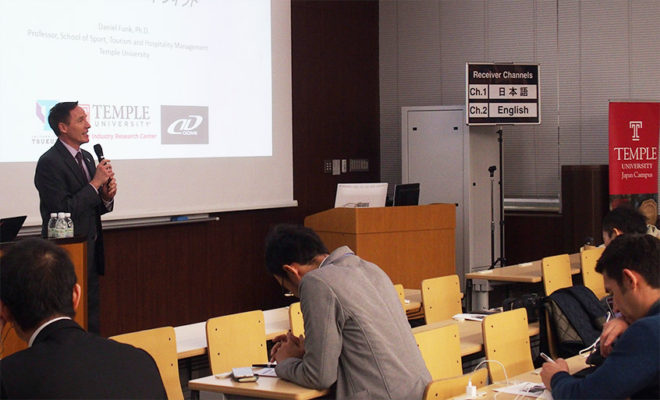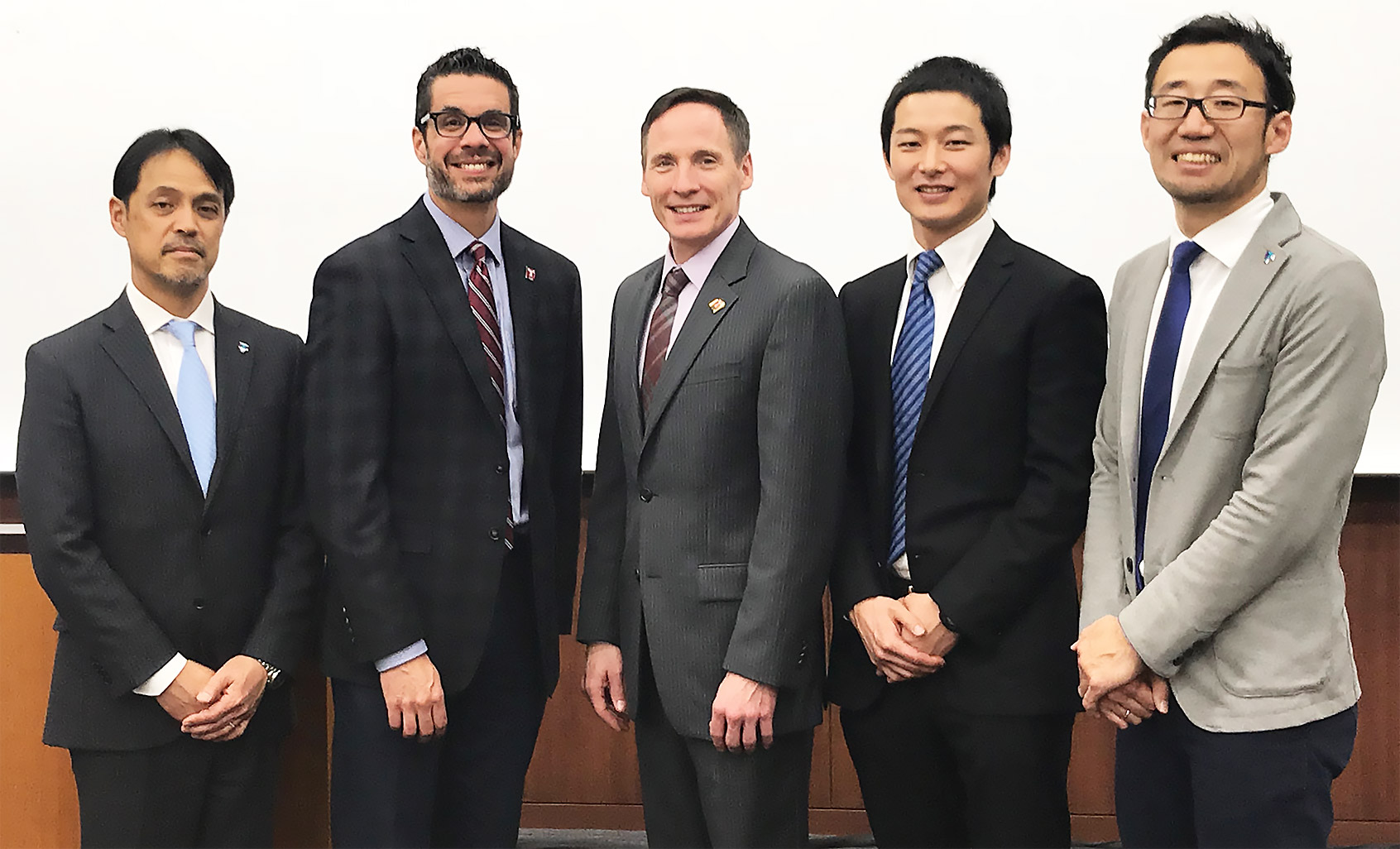A U.S.-Japan collaboration by The University of Tsukuba, Temple University, and DOME (Under Armour)
In light of launching a Japanese version of the NCAA
On March 7, a symposium featuring the final report of the “Japan College Sport Joint Research Project, Phase II” was held at the Bunkyo Ward, Tokyo campus of the University of Tsukuba. This project has been a joint Japanese-U.S. undertaking since 2016 by the University of Tsukuba, Temple University (TU Main Campus in the U.S.) and DOME Corporation. The symposium was held concurrently with a reporting session on Tsukuba’s “Project to Establish an Inter-College and Inter-Discipline Umbrella Organization (a Japanese version of the NCAA) for the promotion of college sport,” sponsored by the Ministry of Education, Culture, Sports, Science and Technology. Specific measures for establishing Athletic Department (AD) at Tsukuba and the transformation that college sport reforms can bring to society as a whole were discussed.

At the beginning of the first session, Tsukuba’s Associate Professor Tsuyoshi Matsumoto noted that expectations surrounding university sports have been growing in response to the “Japan Revitalization Strategy 2016” and “Sports Development Council.” He also discussed the government-sponsored “Joint Council of Industry-Academia-Government for the Establishment of a Japanese NCAA.”
Temple University Professor Daniel Funk argued the benefits of promoting college sports using the example of the United States. He said that sports might provide a key to meeting challenges faced by Japanese higher education, such as declining student enrollment. He advocated leveraging the power of sports in university recruitment efforts and branding, and noted the positive influence of sports on society.
University of Minnesota Assistant Professor Yuhei Inoue (TU Class of 2011) presented a financial analysis of college sports and explained the income structure of the college sports market in the United States, which has a total revenue of a billion dollars (about 1.1 trillion yen). He also explained the role played by the National Collegiate Athletic Association (NCAA).

Looking at U.S. and Japanese college sports, TU Associate Professor Jeremy Jordan proposed, taking a step-by-step approach to establishing ADs in Japanese universities, with Phase I (information gathering), Phase II (development & preparation), and Phase III (governance & expansion).
Tsukuba’s Sports Administrator Shinzo Yamada explained the process of establishing Tsukuba’s AD, which “had not been an easy path.” The project team focused on sharing the mission and vision of activities that would enhance the university’s value and on spreading understanding of the AD within the university.

In his keynote speech, University of Tokyo Executive Vice President Masaki Sakaida spoke on the topic of “College Sport and Regional Revitalization,” citing the establishment of the B.League in Japan as an example. The B.League dramatically expanded the scale of its business and reformed the professional basketball world. He also cited the creation in 2016 by the University of Tokyo Sports Science Initiative of a “tailor-made athlete enhancement project” using AI and big data. He concluded by suggesting the possibility of boosting regional economies through collaboration between universities, local governments, and regional industry leading up to the creation of a Japanese version of the NCAA.
Links
- Temple University professors hosted NCAA President Emmert in Japan
- Final Report Session Held on College Sport Joint Research by the University of Tsukuba, Temple University, and Under Armour
- The University of Tokyo
- University of Tsukuba
- DOME Corporation

